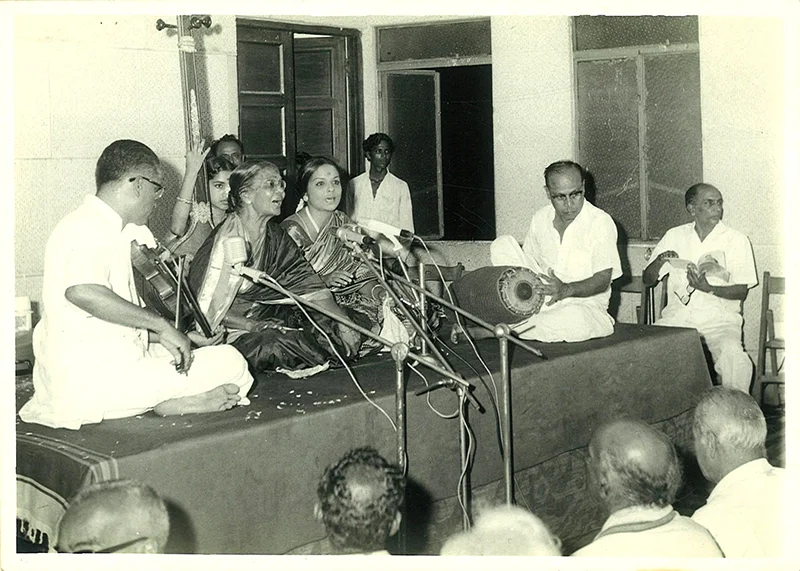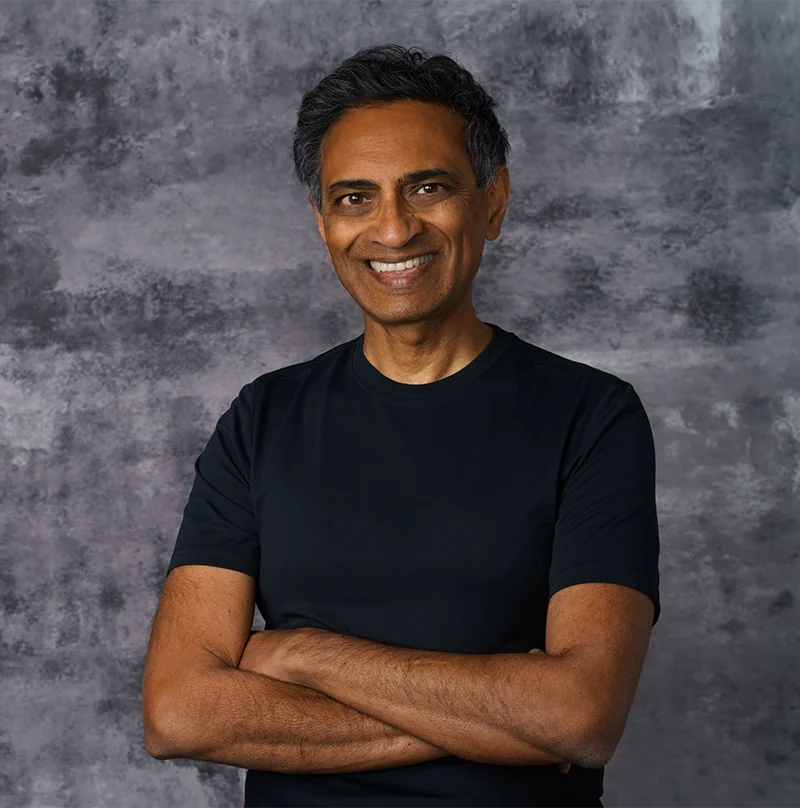Shanker Krishnan was immersed in Carnatic music from childhood, having been raised in a family devoted to music — his sister Sangita Kala Acharya Smt. Geetha Raja is a prominent vocalist, his father was a music and culture columnist, and his mother led devotional singing groups.
Growing up in socialist-era India with limited exposure to external influences, he became deeply connected to Indian classical music, particularly the music of Sangita Kalanidhi Smt. T. Brinda.
His formal training in Indian classical music spanned over a decade and followed the traditional guru-shishya (teacher-student) system, with one-on-one instruction from some of India’s foremost teachers: Sangita Kala Acharya Shri Bombay S. Ramachandran for Carnatic music and Padma Bhushan Ustad Khadim Hussain Khan for Hindustani music.
The emphasis on improvisation inherent in Indian classical music laid the foundation for his later work in composition.
Shanker’s Western classical music training was more unconventional. After coming to the US for graduate study in applied mathematics, he discovered the world of Bach and Bartók, and spent as much time on music study at UC Berkeley as on math.
While working in New York, Shanker took private lessons from composer Nils Vigeland (later Chair of Composition at the Manhattan School of Music). During his 25 years at the World Bank Group in Washington DC, Shanker studied music on the side before eventually leaving to pursue music composition full-time.
Shanker spent a decade in private study with Prof. Justin Boyer, composer and professor of composition and music theory at Montgomery College, MD. He wrote pieces ranging from inventions and fugues, to Classical-era style works, to serialist music. However, he has always been drawn to contrapuntal music in the Baroque style.
In addition to his study at Berkeley, Shanker’s non-musical education includes degrees from IIT Madras and Stanford.

Brinda and Bach: Foundations
(Excerpted from the album’s liner notes)
She is Shrimati T. Brinda, called Brindamma by those who know her, ‘Treasure of the Musical Arts’ (Sangita Kalanidhi) by the rest. Brindamma refuses to be recorded for money. Her singing is prayer to a deity, not a commodity. Nor does she often perform in a concert hall. She prefers to sing at house concerts, where she can see each face, feel her audience focus. Her students visit her to be taught — Carnatic music instruction primarily takes place in homes through an individual guru-shishya or teacher-pupil system that relies on oral transmission (Brindamma dismisses written notation).
When Brindamma appears, the living room becomes a court. Filter coffee and ribbon pakodas are set out, and admirers come to pay their respects. Too many admirers. When their praise grows especially florid, Brindamma sends ironic glances over her rimless glasses toward the boy sitting next to her. He is her pet. She plays cards with him, takes him to Chowpatty beach, sends him off to the Matunga market to buy betel leaves for her to chew. She becomes Brindamma to him. And when she sings, he hears another world.
Shanker Krishnan grew up within a community dedicated to Carnatic music, the South Indian classical music tradition. During the years when he lived in Bombay with his sister, who was training as a vocalist, Brindamma herself would live in their apartment for two months each year. 9 Chhaya, with its two small rooms and fold-out beds, was where Krishnan encountered the jewel-box complexity of Brindamma’s interpretation of Carnatic music. She would unfold a raga slowly, reveling in the luxury of long karvais or sustained notes, bending other notes with the distinctive deliberation of her subtle gamakas. This was pure intricacy.
Brindamma’s musical values stayed with Krishnan as he moved from India to Berkeley, where he first heard Western classical music. Beethoven was a revelation, Schoenberg a provocation, but it was Bach’s Baroque counterpoint that captured him. Bach’s music, with its lines layered vertically over one another, produced its complexity using a different system from Carnatic music. And yet, those foreign sounds felt familiar. Here too Krishnan found pure intricacy, the sense of concentrated musicality that he had once heard resound in the concrete-floor apartment at 9 Chhaya.

Krishnan asked himself: how could these two distinct classical music traditions have produced such a similar response in him? Each had its own origin and trajectory, its own compositional techniques, its own internal logic. But Krishnan could not stop thinking that the Carnatic and the Baroque somehow belonged together. This was the beginning of Krishnan’s compositional journey through the histories of the classical music of South India and Western Europe, in search of a more fundamental synthesis.
